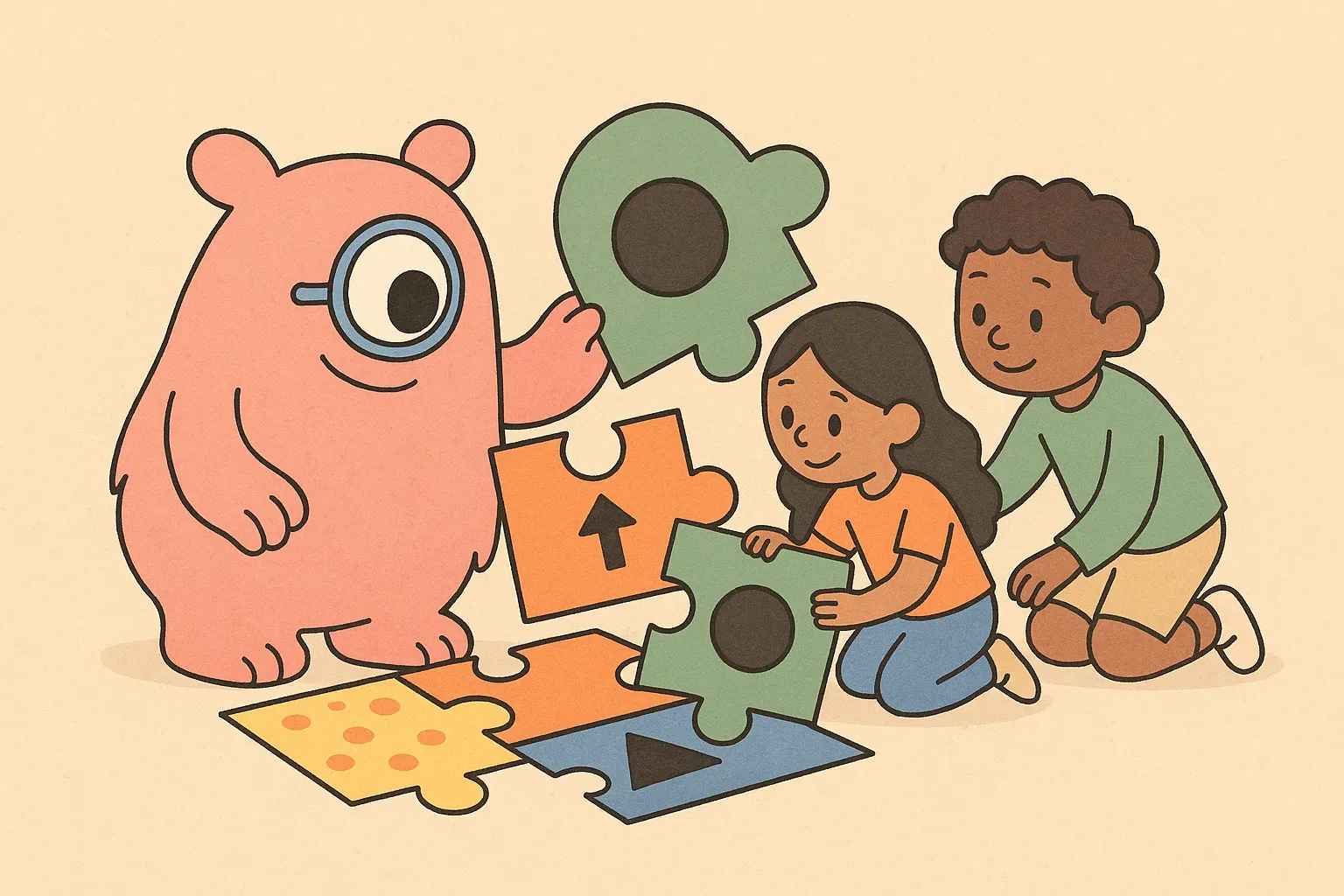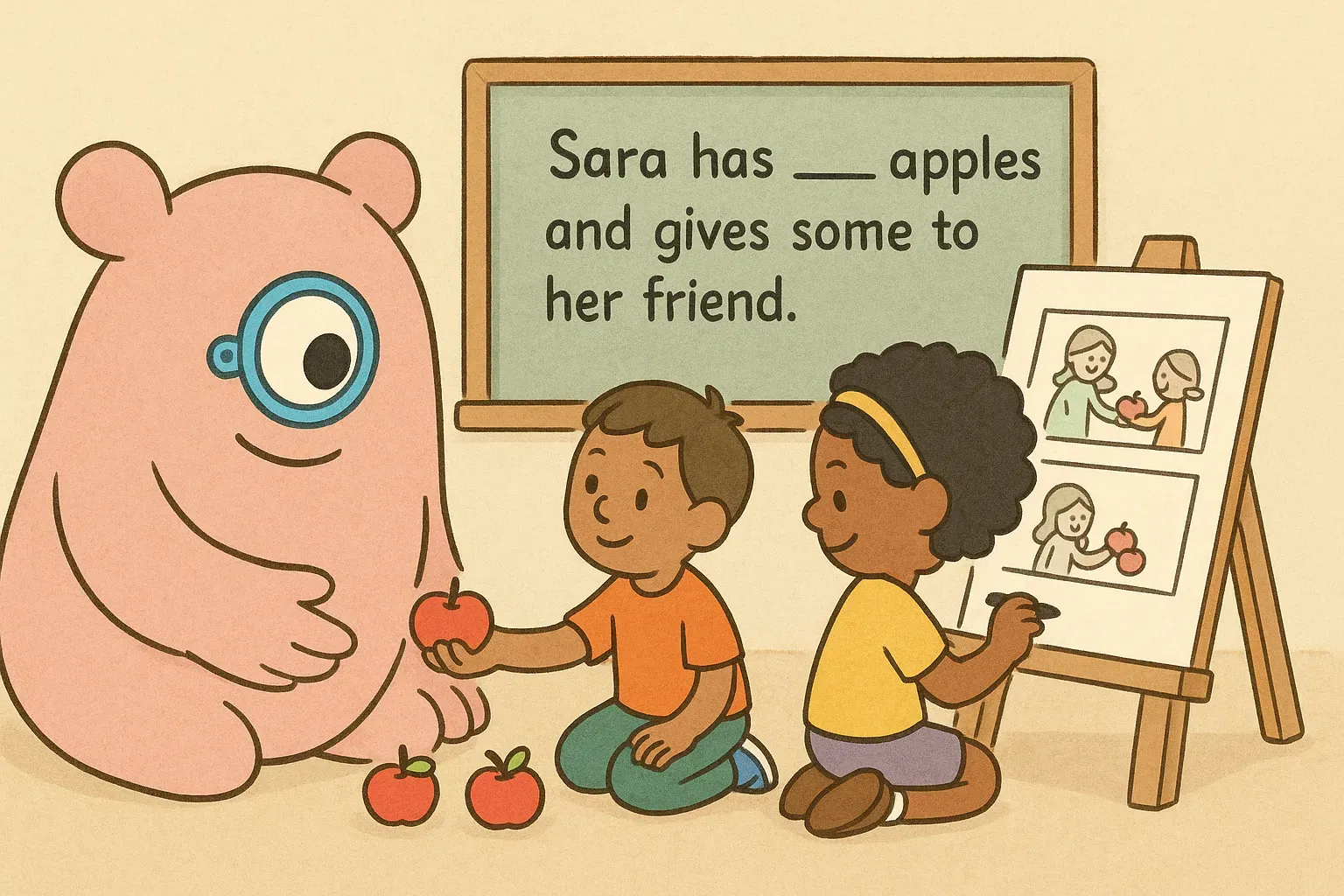Chunking and Numberless Problems: A Reading-Friendly Hack for Math Success
TL;DR Chunking breaks down math tasks into smaller, manageable parts, helping kids with working memory challenges, like those with ADHD or dyslexia. Numberless problems remove numbers from word problems to focus on understanding the story first, reducing overwhelm and building comprehension. Research shows these strategies improve geometry and problem-solving skills for students with math difficulties. Try them at home with simple visuals or story discussions - backed by studies, they can make math more accessible for neurodivergent elementary kids.
As a parent of an elementary school child in the US, especially if your kid is neurodivergent - like having ADHD, dyslexia, or other learning differences - you know math can sometimes feel like an uphill battle. Word problems, in particular, mix reading and numbers in ways that can overwhelm young minds. But what if there were simple, research-backed hacks to make math more reading-friendly? Enter chunking and numberless problems: two strategies that can transform how your child approaches math.
In this post, we'll explore these techniques, drawing only from peer-reviewed research to support their benefits. We'll keep things friendly and practical, focusing on how they help kids in neurodiverse classrooms. If you're a teacher working with diverse learners, these ideas can fit right into your lesson plans too.
For more on supporting neurodivergent kids in math, check out our posts on time management for neurodivergent kids and daily math routines for ADHD brains.
What Is Chunking in Math?
Chunking is a strategy where complex information is broken into smaller, more digestible "chunks." In math, this often means grouping visual elements or steps in problems to reduce the load on working memory. For elementary kids, especially those who are neurodivergent, this can make tasks like geometry or multi-step calculations feel less daunting.

Research suggests that schematic chunking improves geometry performance for students with math difficulties and those at risk of math failure. In one study, students showed greater gains on complex, multi-step problems when diagrams were chunked with colors and marks to highlight patterns. This approach was particularly effective for difficult one-step and multi-step tasks, where chunking helped students recall theorems and organize information more efficiently.
Similarly, visual-chunking representation as a testing accommodation boosted geometry problem-solving accuracy for third-graders with math disabilities. Participants' scores jumped from around 40-50% correct in standard conditions to 70-80% when problems used chunked visuals. The kids even preferred this method, reporting it made solving easier by aiding visual working memory.
For neurodivergent students, chunking aligns with challenges in executive function and visuospatial processing. A study on neurocognitive mechanisms in co-occurring reading and math difficulties found that kids with dyslexia and math issues often struggle with working memory and visuospatial tasks. Chunking helps by reducing the number of items to process at once, making it a supportive hack without altering the math content.
In practice, chunking might look like color-coding steps in a long division problem or grouping shapes in a geometry puzzle. This not only aids comprehension but also builds confidence. As one research piece on working memory and math skills in children with ADHD notes, kids with ADHD often face deficits in multiple math domains, including problem-solving. Strategies like chunking can mitigate these by easing cognitive load.
The Power of Numberless Problems
Numberless problems strip away the numbers from traditional word problems, letting kids focus on the story and relationships first. For example, instead of "Sara has 5 apples and gives 2 to her friend, how many are left?" you start with "Sara has some apples and gives a few to her friend." This shifts emphasis to understanding the scenario before crunching numbers.
Peer-reviewed work highlights how this promotes equitable problem-solving. In a study on promoting equitable problem solving with numberless math stories, researchers outlined strategies like Turn-and-Tell (discussing the story in pairs), Storyboard (visualizing the narrative), and Act-It-Out (physically demonstrating the problem). These provide entry points for all learners, including those with reading challenges, by scaffolding the reveal of information.
For neurodivergent kids, this is especially helpful. Research on comprehensive interventions for word problem solving in students with ADHD showed that schema-based approaches, which include focusing on problem structure before numbers, improved accuracy. While not purely numberless, the emphasis on understanding over immediate calculation mirrors the benefits, with students gaining in conceptual grasp.
Another investigation into attentional cuing in math word problems for girls at-risk for ADHD found that highlighting key elements (similar to chunking words or phrases) enhanced focus and performance. Numberless problems extend this by removing numerical distractions, allowing kids to build mental models first—a boon for those with dyslexia, where reading comprehension intersects with math.
A broader look at math difficulties in ADHD indicates these issues don't stem from basic number sense but possibly from executive functions. Numberless problems help by breaking down the task, focusing on one aspect at a time, much like chunking.
Why These Strategies Work for Neurodivergent Kids
Neurodivergent children, such as those with ADHD or dyslexia, often experience overlapping challenges in reading and math. Peer-reviewed evidence shows co-occurring difficulties in these areas involve executive function and visuospatial processing deficits (PMC10918042). Chunking addresses visuospatial overload by grouping elements, while numberless problems tackle reading demands by prioritizing narrative comprehension.
In elementary settings, these hacks foster inclusivity. A study on visual chunking in STEM demonstrated that even novices benefit from spatial grouping, which can extend to math for pattern recognition. For teachers in neurodiverse classrooms, integrating these means more students can engage without frustration.
Parents, you can try chunking by using colored sticky notes for problem steps or apps like Monster Math for visual breakdowns. For numberless problems, rewrite textbook questions at home, discussing the story before adding numbers. This builds resilience and joy in learning. See our related post on ADHD and math strategies for more ideas.
Getting Started with Chunking at Home
Chunking involves breaking math problems into smaller, manageable parts, which helps with working memory and visuospatial challenges common in neurodivergent kids. Research shows that chunking in division promotes conceptual understanding, allowing children to grasp the "why" behind calculations rather than just procedures. In a study of Year 6 students, higher-achieving kids preferred chunking for its flexibility, while additive chunking (building up through addition) was suggested for those struggling with subtraction-based methods.
To implement chunking at home:
- Build Basic Skills First: Ensure your child has a solid grasp of times tables and place value, as these are key for effective chunking. A small-scale study found that poor times table knowledge hinders fluency in chunking. Spend 5-10 minutes daily reviewing with flashcards or with apps like Monster Math.
- Use Everyday Examples: Turn chores into chunking practice. For division, like sharing 12 cookies among 3 friends, chunk by giving out groups of 4: "How many groups of 4 make 12?" This links to real life, reinforcing place value and mental methods as per research on conceptual fluency.
- Try Subtractive and Additive Chunking: For subtractive (common in schools), start with a number like 72 ÷ 3: Subtract chunks like 30 (10×3), then another 30, then 12 (4×3), adding steps to get 24. For additive, build up: Add 3 repeatedly (3, 6, 9...) until 72, counting additions. Studies suggest additive chunking suits lower achievers by leveraging addition security (chunking study).
- Visual Aids for Neurodivergent Kids: Use colors or drawings to group chunks, easing visuospatial load. Peer-reviewed work on neurocognitive mechanisms in math difficulties notes that such strategies help with executive function deficits in dyslexia and ADHD.
- Practice Gradually: Begin with simple problems (e.g., 18 ÷ 3) and increase complexity. Allow choice between methods to build confidence, as flexibility in teaching order aids individual needs (BSRLM).
Implementing Numberless Problems at Home
Numberless problems remove numbers from word problems to emphasize the story and relationships first, reducing overwhelm for kids with reading or attention challenges. A mixed-methods study on numberless word problem routines with second graders showed improved understanding when implemented consistently, though home adaptations weren't directly studied. Similarly, research on effective word problem solving recommends schemas using numberless problems to build comprehension.

Here's how to adapt them for home:
- Create Simple Stories: Start with everyday scenarios without numbers: "You have some toys and share with siblings. What happens?" Discuss actions before adding numbers. This scaffolds entry for diverse learners, as per the equitable problem-solving research.
- Use Strategies Like Turn-and-Tell: Have your child retell the story in their words. For neurodivergent kids, this builds focus; studies on ADHD interventions show schema-based approaches improve accuracy (ADHD word problem study).
- Storyboard or Act-It-Out: Draw pictures or role-play the problem. For example, act out "sharing some apples" with props. Gradually reveal numbers. NCTM research highlights these for promoting reasoning in early grades (making word problems meaningful).
- Focus on Small Sets: Discuss small numbers first, like in books or toys, to simplify. PMC research found labeling sets boosts math performance, especially for kids with inhibitory control issues (parental math input study).
- Combine with Chunking: After understanding the story, chunk the math steps. For ADHD, short sessions prevent overload, supported by working memory studies (ADHD working memory).
Tracking Progress and Adapting for Neurodivergent Needs
Monitor with a simple chart, celebrating small wins. Adapt by using timers for ADHD or larger fonts for dyslexia. Evidence from co-occurring difficulties research shows these tweaks support executive functions (PMC10918042). If needed, combine with our ADHD math strategies.
These methods, grounded in research, make math fun and accessible. Start small, and watch your child's confidence grow.
FAQ
What age is best to start these strategies?
Elementary school, around grades 2-5, when word problems ramp up. Research on second-graders shows benefits in problem-solving (equitable problem-solving study).
Do these work for all neurodivergent kids?
They help many, but individual needs vary. Studies indicate improvements for those with ADHD and dyslexia, but consult educators for personalization.
How do I know if my child needs these hacks?
If reading in math causes frustration or errors, try them. Evidence links executive function challenges to math struggles (ADHD math difficulties).
Can teachers use these in class?
Yes, they're adaptable for neurodiverse groups. Peer-reviewed guides suggest scaffolding for equity.
Citations
- Effects of Schematic Chunking on Enhancing Geometry Performance (Learning Disability Quarterly, 2021)
- The Effect of Visual-Chunking-Representation Accommodation (Learning Disabilities Research & Practice, 2012)
- Neurocognitive Mechanisms of Co-occurring Math Difficulties in Dyslexia (PMC, 2024)
- Promoting Equitable Problem Solving with Numberless Math Stories (Mathematics Teacher: Learning and Teaching PK-12, 2022)
- Effectiveness of Comprehensive Intervention on Word Problem Solving for ADHD (ResearchGate, 2019)
- Attentional Cuing in Math Word Problems for Girls At-Risk for ADHD (Contemporary Educational Psychology, 2012)
- Math Difficulties in ADHD (PMC, 2022)
- Working Memory and Math Skills in Children with ADHD (PMC, 2024)
- Visual Chunking as a Strategy for Spatial Thinking in STEM (Cognitive Research: Principles and Implications, 2020)
- To Chunk or Not to Chunk: Learning Division (BSRLM, 2015)
- Boosting Parent-Child Math Engagement (Harris School of Public Policy, 2023)
- Parental Math Input Moderated by Inhibitory Control (PMC, 2022)
- More Effective Ways to Solve Word Problems (The Reading Teacher, 2025)
- Numberless Word Problem Routine with Second Graders (ERIC, 2023)
- Neurocognitive Mechanisms in Co-occurring Math Difficulties (PMC, 2024)
- Comprehensive Intervention for ADHD Word Problems (ResearchGate, 2019)
- Working Memory and Math in ADHD (PMC, 2024)
- Parent-Focused Interventions for Early Math (LRDC, 2023)

